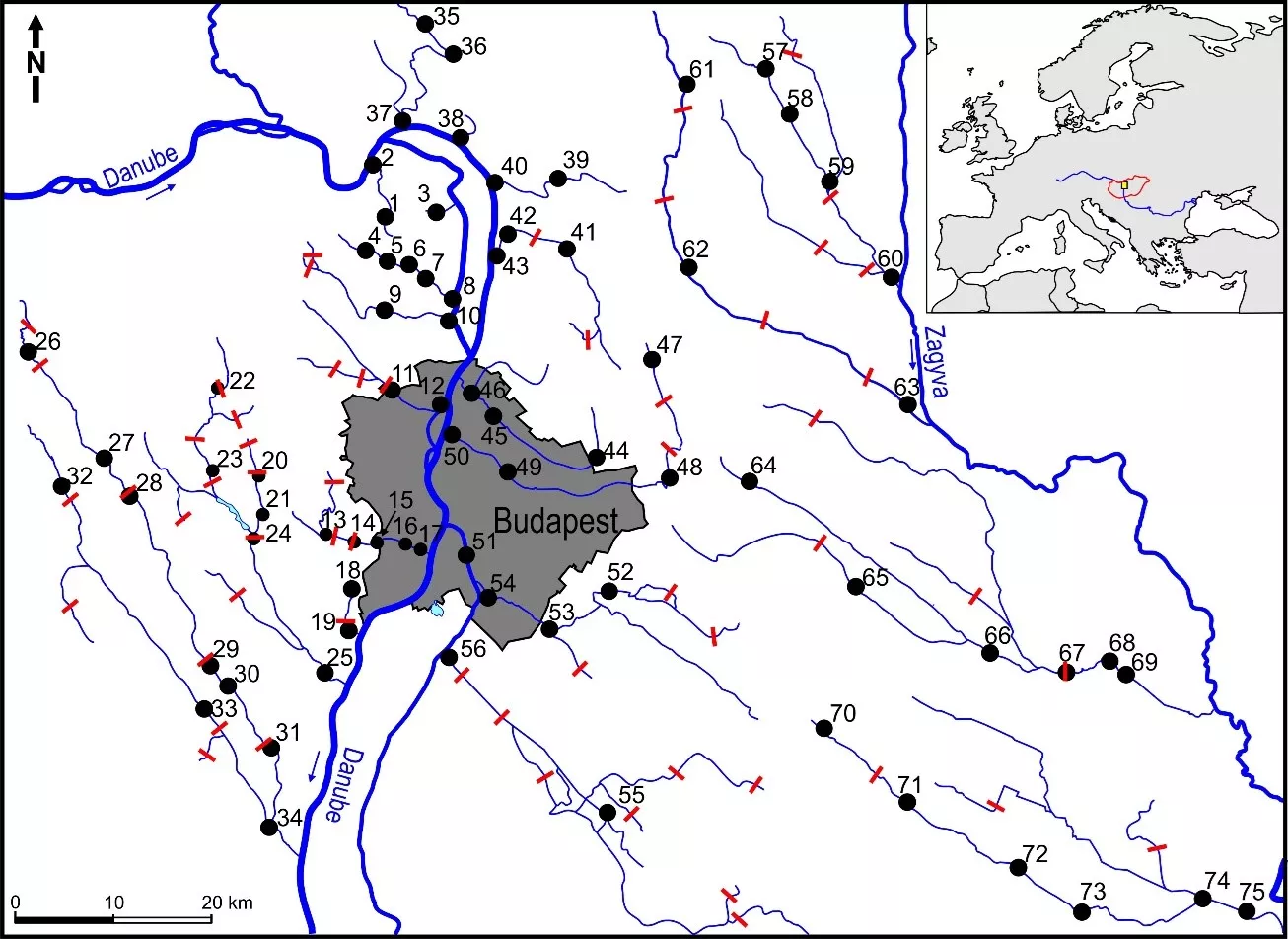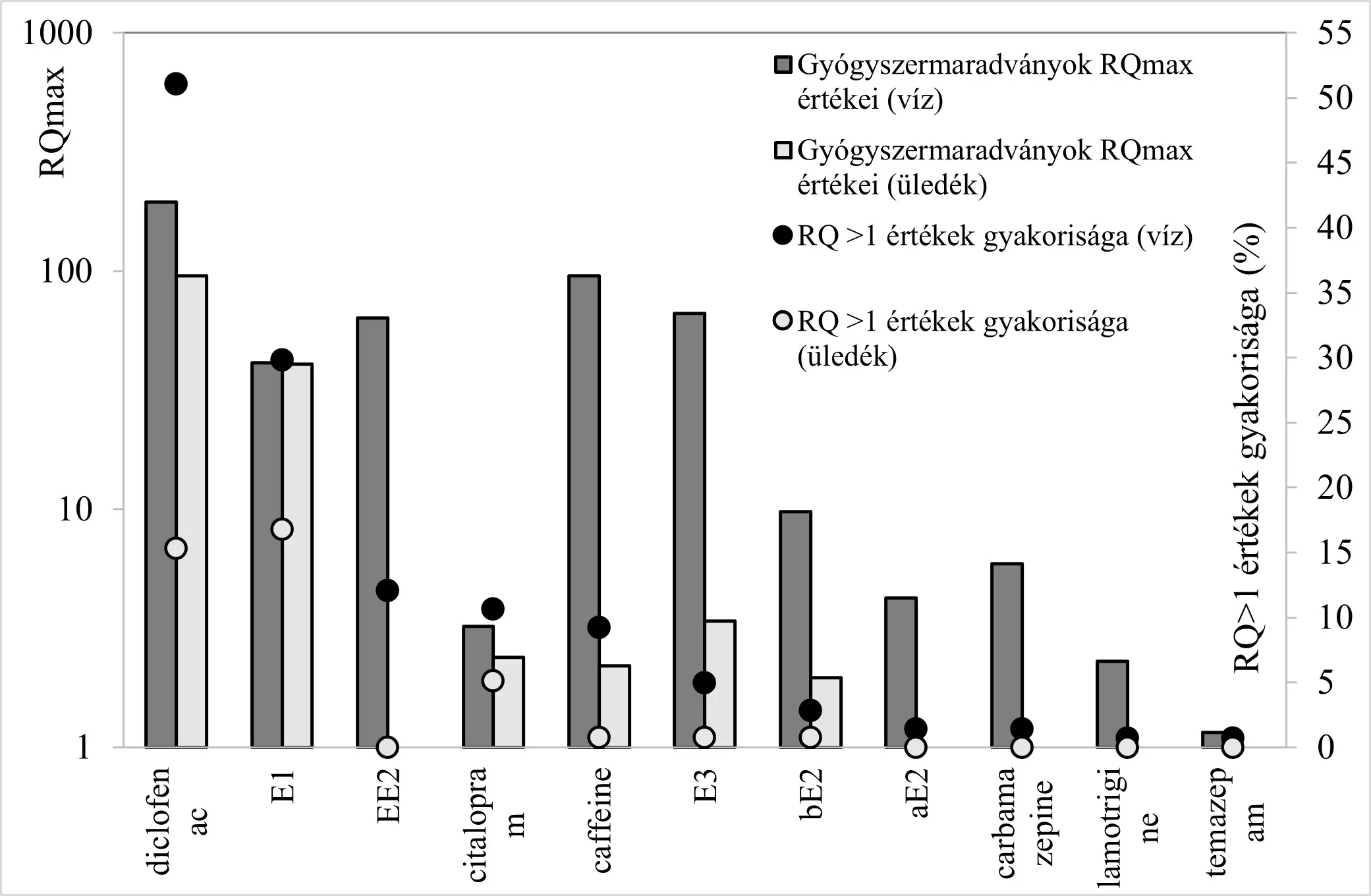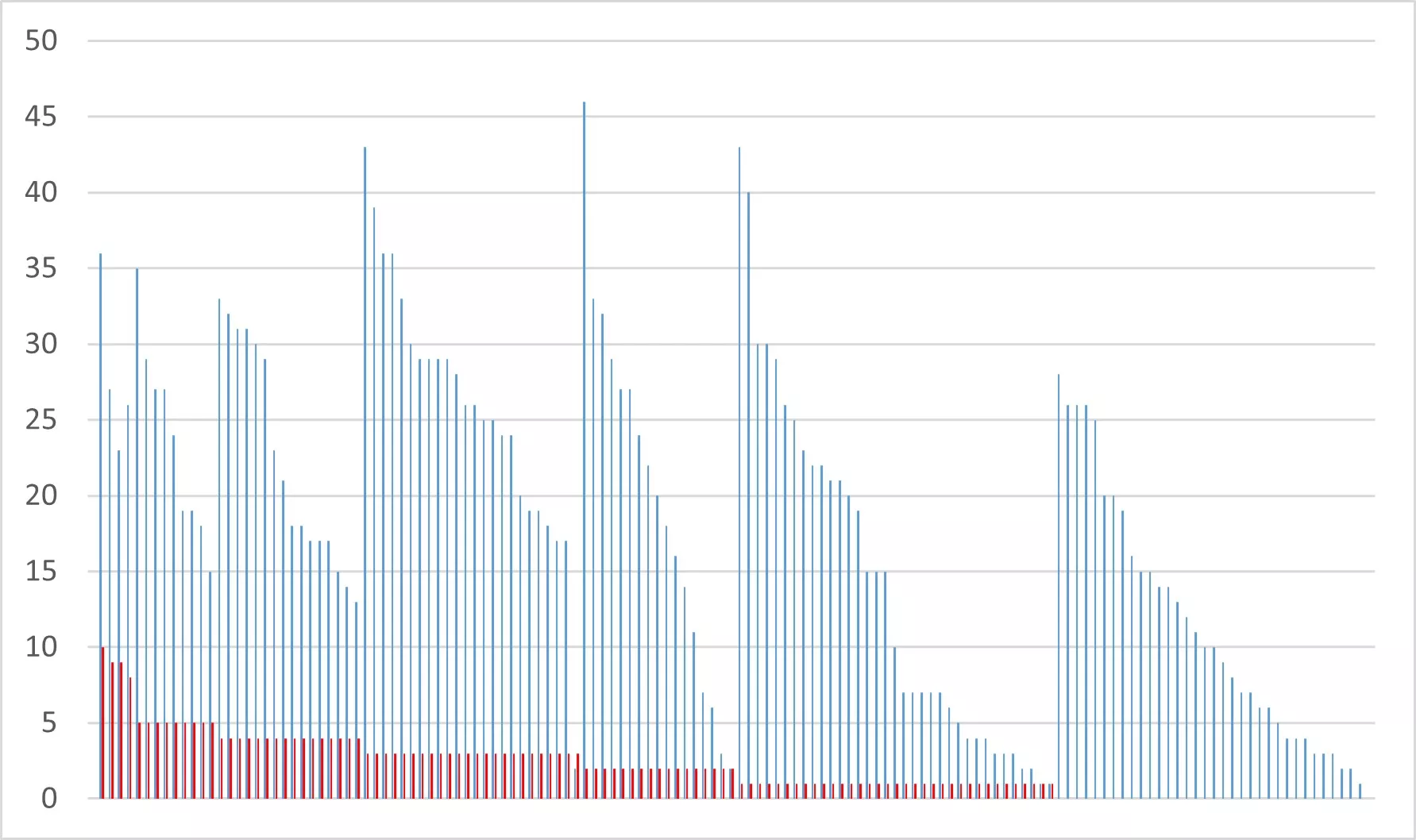An NVKP research group led by the ELKH Research Centre for Astronomy and Earth Sciences (CSFK) has studied the drug contamination of smaller watercourses in the Budapest agglomeration for two years. There is no risk to human health from detectable drug concentrations in stream water and sediments. However, some hormone derivatives, anti-inflammatories and antiepileptics may pose an environmental risk to wetlands. An article presenting the research findings has been published in the prestigious journal Science of the Total Environment. In the interests of reducing the burden on the environment, CSFK researchers are working on new technologies in the CLEAREADY program, as part of which they have filed a patent application for a new process.
The smaller watercourses and wetlands that form the backbone of ecological networks are extremely vulnerable and their pollution affects the entire ecosystem. As a result, low-flow streams may be at risk if they are subject to significant anthropogenic pressures, for example when they also act as receivers for wastewater or water flowing from smaller or larger wastewater treatment plants. Across the globe, the fact that not even state-of-the-art treatment plants are able to completely remove all active ingredients that are harmful to the aquatic ecosystem is a serious problem, as it means the introduction of treated wastewater can increase the concentration of nano- and micro-contaminants such as drug residues in small watercourses.
In the study conducted by CSFK and involving several partners, including the ELKH Centre for Ecological Research and the ELKH Balaton Limnological Research Institute, the researchers took 141 water and sediment samples in 26 different watercourses in the partially urbanized Budapest metropolitan area, looking for the presence of 111 drug residues in a total of 75 sampling sites (Figure 1). Laboratory analysis showed the presence of 81 drug residues in the aqueous phase and 62 in the sediment. As has been found internationally, the antidepressant carbamazepine was the most frequently identified active substance in water (detected in 91.5% of all samples), while the analgesic lidocaine was the most frequently detected in the sediment (73.8%). In water, the highest concentrations were detected for the antiepileptic lamotrigine (344.8 μg/L) and caffeine (221.4 μg/L), while carbamazepine (395.9 ng/g) and tiapride (187.7 ng/g), which is usually used as a sedative, had the highest values in the sediment.

During the ecological risk analyzes performed, the researchers found a total of 11 concentrations of drug residues in water and 6 in sediments to be ecologically hazardous in at least one sample (Figure 2, RQ> 1). The occasional prominent risk of anti-inflammatory diclofenac, caffeine in coffee and many energy drinks, and anthropogenic estrogen hormones (E1, aE2, bE2, EE2, E3) should be noted. This is significant, as micro-contaminants can affect the fertility or external properties of some aquatic organisms, such as the body and scales of fish. In addition, active substances of the same type detected in both water and sediment samples from the same site may in fact present higher risks. However, an objective assessment also includes the fact that the proportion of samples indicating risky values in the whole sample is low.

In the case of small streams, the risk values are influenced by a number of factors, includingwater flow, temperature and the quality of the incoming wastewater, and are therefore extremely variable in space and time, i.e. they cannot be considered constant. The extent of the pollution is shown by the fact that although most of the drug residues can be found in the riverbed sections under the influence of the wastewater treatment plants around Budapest, the active substances are also present in the upper sections without treated wastewater (Figure 3-4). Of particular interest is the lack of a causal relationship between the number and total amount of drug residues found and the amount of incoming treated wastewater and the distance from inflows. All this warns us that pollution is not only caused by sewage treatment plants, but also by the rate of introduction and infiltration of untreated wastewater in the upper sections, and especially urbanized sections. As a result, the life of essentially the entire stream network is exposed to pollution, from the source to the estuary. It is difficult to measure the risks in these short watercourses, 10–20 km long, in space and time, nor can these risks be predicted.


Continuous but unpredictable levels of pollution upset the local environmental balance and weaken adaptability, which can contribute to biodiversity loss and the spread of non-native invasive species. The intensification of urbanization, the load of streams with treated and untreated wastewater, and the increasing frequency of low water flows, may all lead to further increases in pollution in the future. Researchers believe that similar surveys are needed to protect the ecosystem, in line with EU surface water monitoring standards. To reduce the risks, CSFK researchers are working on new technologies in the CLEAREADY program. In the preliminary findings, they have been able to develop a new process that allows some green waste or surplus agricultural by-products to be easily converted and used as a water filter. For the new procedure, the research center filed a patent application with the National Office of Intellectual Property at the end of 2021. Building on the achieved results, in the second half of 2021, CSFK received support through a Market RDI call from the Hungarian National Office for Research, Development and Innovation, together with Hegykői Mezőgazdasági Zrt. and the University of Pannon, for the further development of the technology in order to remove drug residues from polluted waters in a more cost-effective way than before, thus reducing the ecological load.
Study published on the topic:
Kondor, A.Cs., Molnár, É., Jakab, G., Vancsik, A ., Filep, T., Szeberényi, J., Szabó, L., Maász, G., Pirger, Zs., Weiperth, A., Ferincz, Á., Staszny, Á., Dobosy, P., Horváthné Kiss K., Hatvani, I.G., Szalai, Z. 2022. Pharmaceuticals in water and sediment of small streams under the pressure of urbanization: Concentrations, interactions, and risks. Science of the Total Environment 808. Paper: 152160 , 11 p.